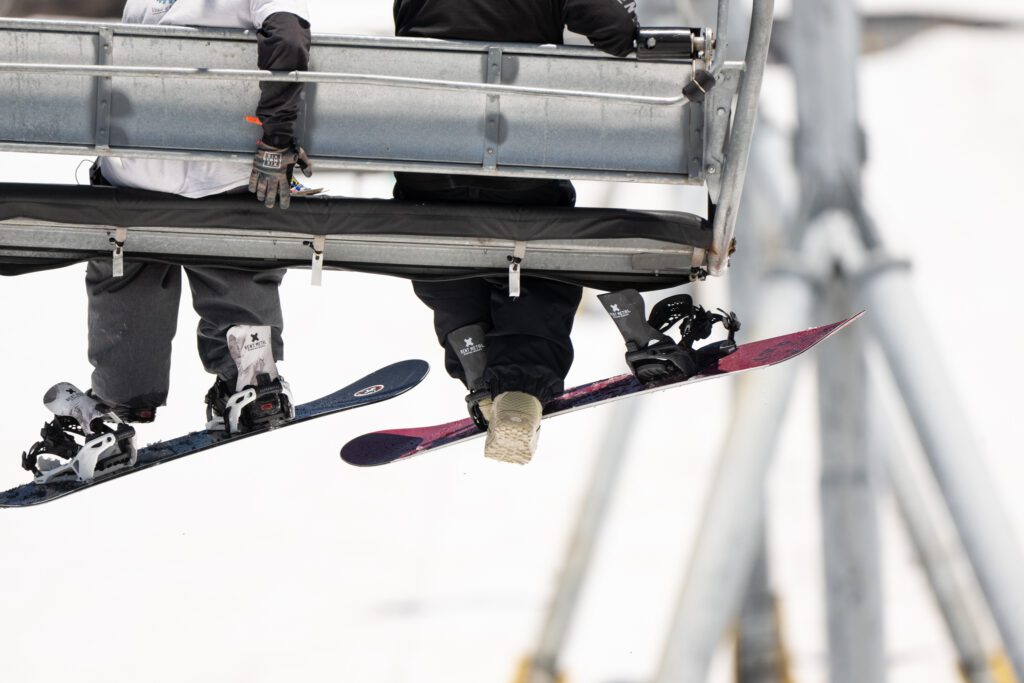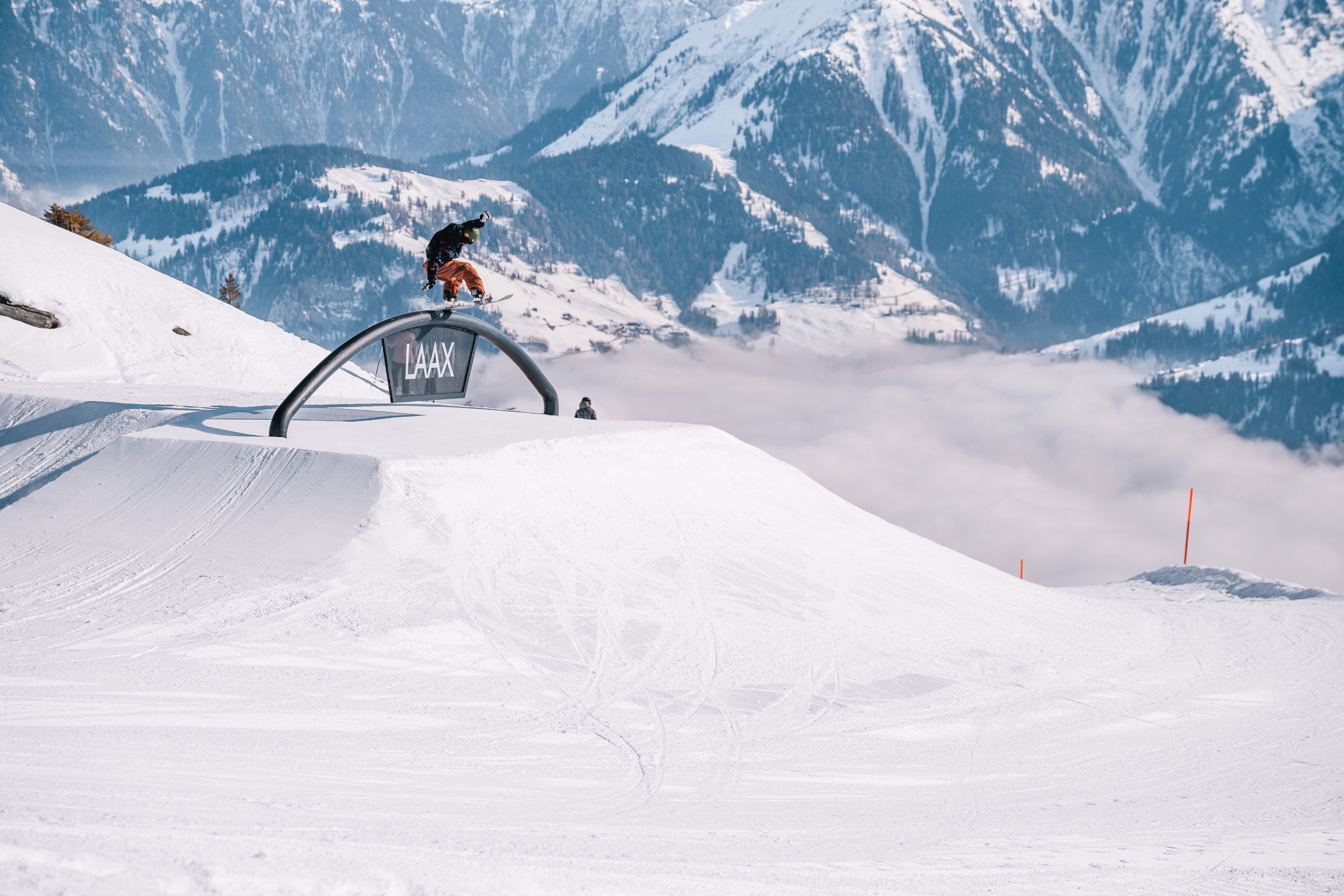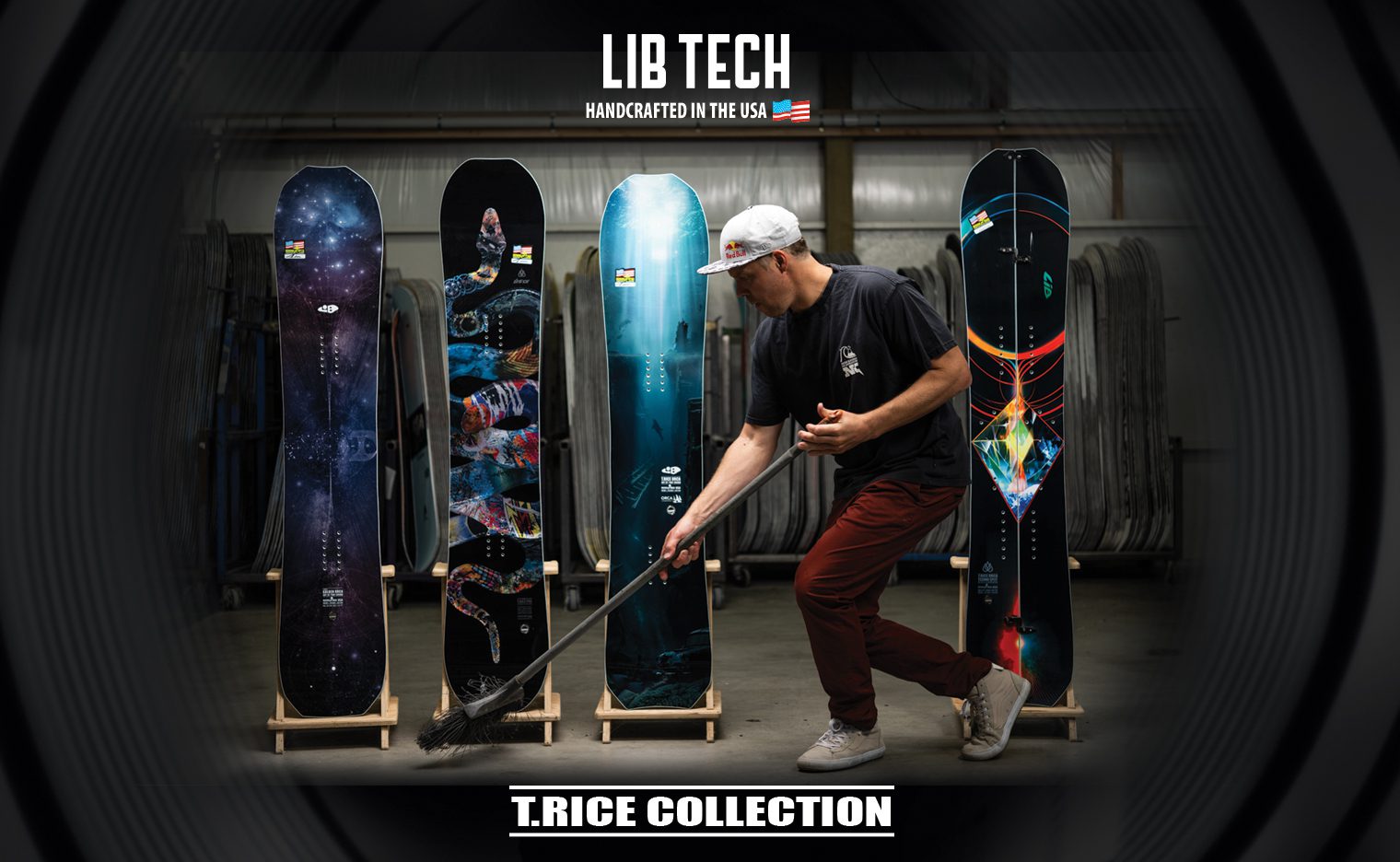
Gear Chat: Ben Ferguson on his Custom Limited Edition
Ben Ferguson just turned 30, and the legendary Burton Custom is also

Snowboard Bindings Explained: The Complete 2025/26 Guide to Binding Types, Mechanisms & How to Choose the Best Snowboard Bindings for You.

Snowboard binding tech has come a long way from the simple strap-ins of the early 2000s. What used to be a basic question, “Do you want stiff or soft highbacks?”, has exploded into a full buffet of systems, materials, and mechanisms. Step Ons, FASE (Fast Entry System), rear-entry, lever-loaded surf-style setups… it’s a lot to take in.
If it all feels overwhelming, you’re not alone. That’s exactly why we built this guide: to help you cut through the noise, figure out what’s actually worth your attention, and understand what will genuinely improve the way your board rides.
Bindings are your direct connection to the board. They control energy transfer, responsiveness, comfort, and whether your boots stay locked in when things get spicy. Great bindings = confident riding. Bad bindings? Heel lift hell and unpredictable turns.
Whether you’re:
This guide’s for you. We’ll break down the main binding types (strap-in, Step On, rear-entry, hybrid systems, and splitboard-specific models), cover key features to look for, and explain how to match your bindings to your board, boots, and riding style. Plus: rider-tested picks for every category – from beginner-friendly cruisers to surfy backcountry missions.
“Bindings are your direct connection to the board”
Snowboard bindings are the essential interface between you and your board. They transfer your movements into the deck, hold your boots in place, and control how your board flexes, turns, and responds.
A good set of bindings feels like an extension of your legs. A bad set? They’ll have you cursing every turn, every chatter patch, and every toe-side washout. Bindings don’t just keep you strapped in — they shape the way you ride.
Bindings come in a wide range of flex patterns, fit systems, and tech setups, each designed for different riding styles, ability levels, and boot/board combos. Whether you’re lapping the park, surfing powder, or cruising groomers, the right bindings can transform your riding experience.
Baseplate
The foundation of the binding that connects to the board. Materials range from plastic blends to carbon or aluminum. Rigid plates deliver more power and precision; softer builds give you flex and feel. The baseplate also houses the mounting disc or channel system.
Highback
The vertical spine rising behind your boot. It’s key for heel-side response, control, and support. Most highbacks allow forward-lean and rotational adjustments so you can dial in a stiff/aggressive or loose/surfy feel.
Straps
The lockdown system for your boots.
Heelcup
The reinforced section cradling your heel. Often adjustable to help center your boot in the binding for proper balance and edge engagement.
Footbed / Padding
Where your boot sits. Impacts comfort, shock absorption, and board feel. Many feature canting (angled footbeds) to align your knees naturally and reduce fatigue.
Mounting Disc / Interface
The hardware that connects the binding to your board. Common types include 4×4, 2×4, and Burton’s Channel system (we’ll cover compatibility later).
“A good set of bindings feels like an extension of your legs”
There’s more than one way to strap in. From classic two-strap setups to new-gen systems, binding entry tech has evolved fast, and choosing the right one comes down to how you ride, what gear you’re pairing it with, and how much you value convenience vs. customization.
Here’s a breakdown of the most common binding entry systems, what they’re best for, and what to keep in mind.
The gold standard. Two-strap bindings use a separate ankle strap and toe strap to lock your boot in. They take a few extra seconds, but the payoff is full adjustability, precision, and the kind of fit that’s trusted everywhere from bunny slopes to Olympic finals.
Examples: Union Force, Ride Drone, Bent Metal Anvil
Pros: Most customizable and responsive setup; excellent board feel
Cons: Slightly slower to strap in; requires initial setup
Best For: Everyone from first-day riders to seasoned pros who want maximum control
Burton’s Step On system replaces straps with a quick-entry heel and toe click-in design. Step on, hear the click, and ride away – no bending down, no fiddling. It’s clean, fast, and futuristic – though you’ll need Step On boots to match.
Examples: Burton Step On Cartel, Burton Step On Lexa
Pros: Lightning-fast entry; strap-free convenience
Cons: Boot-specific; slightly reduced lateral mobility
Best For: Resort riders, all-mountain cruisers, convenience-first shredders
FASE (Fast Entry System) blends classic strap feel with a modern quick-entry twist. Instead of ratcheting every time, the straps pivot open and shut, so you can slide in and lock down instantly — without losing that fine-tuned micro-adjustability.
Examples: Bataleon Blaster FASE, Rome Katana FASE, Jones Mercury FASE
Pros: Faster entry/exit; still fully tweakable; works with any snowboard boot
Cons: Slightly more moving parts; not as instant as Step Ons
Best For: Riders who like the familiar feel of straps but want to shave time in the lift line
Rear-entry bindings use a hinged highback that drops down, letting you slide your boot in from the back and snap it shut. This design is best known from Flow, and it’s still around today for riders who want a quicker way in without fiddling with straps.
Examples: Flow Fenix
Pros: Quick entry without unstrapping fully; less time fiddling on steeps.
Cons: Can feel heavier; less micro-adjustable than classic two-straps.
Best For: Riders who want old-school simplicity with some added convenience.
Often mistaken for “rear-entry,” modern systems like Nidecker’s LT Supermatic and Bent Metal’s Lightning Supermatic are actually something different. Instead of just dropping a highback, they use automatic step-in tech combined with two-strap security. Step in, the straps close and lock automatically, and you can still ratchet down for extra precision if you want.
Examples: Nidecker LT Supermatic, Bent Metal Lightning Supermatic
Pros: Lightning-fast automatic entry; full two-strap feel once locked in.
Cons: More moving parts; heavier than minimalist strap setups.
Best For: Riders who want step-in speed but aren’t willing to give up the support, adjustability, and board feel of straps.
BOA-based systems (like K2’s Clicker X HB) ditch straps entirely, using dials on both boot and binding for rapid entry and micro-adjustment. The result is a powerful, tech-forward connection with plenty of precision.
Examples: K2 Clicker X HB
Category: Step-in hybrid
Pros: Fast entry; locked-in support; BOA precision
Cons: Limited boot options; stiffer ride feel
Best For: Fast-lappers, advanced riders, tech-leaning minimalists
A new-school twist on quick entry. Lever- or pivot-based bindings combine the speed of rear-entry with a surfier, more natural flex pattern. They might take a run or two to get used to, but once you click with them, the feel is unique.
Examples: Bone Binding 25/26
Category: Hybrid step-in with lever/pivot mechanism
Pros: Surfy flex feel
Cons: Niche system; short learning curve
Best For: Surf-style chargers and gear nerds who love innovation
Purpose-built for the backcountry, splitboard bindings switch between “ride mode” for the descent and “tour mode” for climbing. Lightweight and engineered to shed snow, they’re the key to earning turns far from the chairlift.
Examples: Burton Step On Split, Union Charger, Spark R&D Arc ST
Pros: Lightweight; dual-purpose; made for the skin track
Cons: Expensive; only for splitboards
Best For: Backcountry explorers, tourers, and anyone chasing untouched lines
Beyond entry systems, the features inside your bindings make a huge difference in how they ride, feel, and fit. From shock absorption to flex tuning and strap design, here’s what to look for – and why it matters.
The highback is the vertical plate behind your boot, responsible for heel-side response and support.
Examples:
The baseplate is the platform your boot stands on and the part that mounts to the board.
Examples:
Straps are what lock your boots in and define comfort and responsiveness.
Examples:
Modern bindings let you fine-tune without tools, even on the hill.
Examples:
Adjustable heelcups center your boot in the binding, keeping balance and edge control dialed. Some bindings slide the heelcup, others adjust via toe ramps or footbeds.
Examples:
Bindings aren’t one-size-fits-all – and they definitely aren’t one-style-fits-all either. The right binding for you depends on how you ride, where you ride, and what you want out of your setup. Here’s a breakdown of what to look for by riding style — plus tested examples that do the job right.
If your riding revolves around side hits, rails, park laps, and presses, you’ll want bindings that flex with you – not fight you. Look for softer flex, cushy straps, and playful energy. The focus here is on freedom of movement, not brute-force control.
What to look for:
Top picks:
All-mountain bindings need to do it all: from groomers and pow laps to park detours and sidecountry drops. You want a binding that balances support with comfort, and is responsive without being rigid.
What to look for:
Top picks:
Freeriders and backcountry splitboarders demand confidence and control – especially when things get steep, deep, or dicey. You’ll want stiffer flex, maximum response, and gear that holds up under pressure.
What to look for:
Top picks:
Splitboard bindings are a category of their own: built to switch between skinning and riding modes. Lightweight construction, efficient transitions, and solid ride feel are key.
What to look for:
Top picks:
You can buy the best bindings in the world – but if they don’t fit your boots or board, your setup’s gonna ride like a pow day with rental boots two sizes too big. Here’s how to make sure everything lines up properly.
Your bindings need to fit your boots like a glove. Too loose and you’ll lose power and control. Too tight and your foot will go numb by lunch.
Here’s what to check:
Pro tip: Always bring your boots when shopping – or if you’re buying online, triple-check the size chart and return policy.
Examples:
Not all boards and bindings speak the same language. Here’s the breakdown:
2×4
4×4
Channel (Burton-exclusive)
3D (Burton legacy)
If in doubt: Most multi-discs cover both 2×4 and 4×4. For Burton boards, check if your binding is EST (Channel only) or Re:Flex (Channel + 2×4/4×4).
Rule of thumb: Boot size → Binding size → Board insert pattern. Make sure all three connect before you hit checkout.
See the best snowboard bindings for 2025/26 tested by Snowboard International, from all-mountain and freestyle to freeride and powder. Our Buyer’s Guide breaks down top gear with real rider feedback.
DROPPING SOON

Ben Ferguson just turned 30, and the legendary Burton Custom is also

On a stage defined by progression and innovation, Volcom proudly unveils the

The New and Updated Travis Rice Dream Snowboard Collection is Live! Travis
Sign up for the very best in snowboard culture, get notified of prize drops, and receive our weekly essential news hit: The Friday Dump.
| Cookie | Duration | Description |
|---|---|---|
| cookielawinfo-checkbox-advertisement | 1 year | The cookie is set by GDPR cookie consent to record the user consent for the cookies in the category "Advertisement". |
| cookielawinfo-checkbox-analytics | 11 months | This cookie is set by GDPR Cookie Consent plugin. The cookie is used to store the user consent for the cookies in the category "Analytics". |
| cookielawinfo-checkbox-functional | 11 months | The cookie is set by GDPR cookie consent to record the user consent for the cookies in the category "Functional". |
| cookielawinfo-checkbox-necessary | 11 months | This cookie is set by GDPR Cookie Consent plugin. The cookies is used to store the user consent for the cookies in the category "Necessary". |
| cookielawinfo-checkbox-others | 11 months | This cookie is set by GDPR Cookie Consent plugin. The cookie is used to store the user consent for the cookies in the category "Other. |
| cookielawinfo-checkbox-performance | 11 months | This cookie is set by GDPR Cookie Consent plugin. The cookie is used to store the user consent for the cookies in the category "Performance". |
| viewed_cookie_policy | 11 months | The cookie is set by the GDPR Cookie Consent plugin and is used to store whether or not user has consented to the use of cookies. It does not store any personal data. |
| Cookie | Duration | Description |
|---|---|---|
| _ga | 2 years | This cookie is installed by Google Analytics. The cookie is used to calculate visitor, session, campaign data and keep track of site usage for the site's analytics report. The cookies store information anonymously and assign a randomly generated number to identify unique visitors. |
| _gat_gtag_UA_189035576_1 | 1 minute | This cookie is set by Google and is used to distinguish users. |
| _gid | 1 day | This cookie is installed by Google Analytics. The cookie is used to store information of how visitors use a website and helps in creating an analytics report of how the website is doing. The data collected including the number visitors, the source where they have come from, and the pages visted in an anonymous form. |
| CONSENT | 16 years 4 months 12 hours | These cookies are set via embedded youtube-videos. They register anonymous statistical data on for example how many times the video is displayed and what settings are used for playback.No sensitive data is collected unless you log in to your google account, in that case your choices are linked with your account, for example if you click “like” on a video. |
| Cookie | Duration | Description |
|---|---|---|
| IDE | 1 year 24 days | Used by Google DoubleClick and stores information about how the user uses the website and any other advertisement before visiting the website. This is used to present users with ads that are relevant to them according to the user profile. |
| test_cookie | 15 minutes | This cookie is set by doubleclick.net. The purpose of the cookie is to determine if the user's browser supports cookies. |
| VISITOR_INFO1_LIVE | 5 months 27 days | This cookie is set by Youtube. Used to track the information of the embedded YouTube videos on a website. |
| YSC | session | This cookies is set by Youtube and is used to track the views of embedded videos. |
| yt-remote-connected-devices | never | These cookies are set via embedded youtube-videos. |
| yt-remote-device-id | never | These cookies are set via embedded youtube-videos. |
| Cookie | Duration | Description |
|---|---|---|
| _pk_id.43969.7c7f | 1 year 27 days | No description |
| _pk_ses.43969.7c7f | 30 minutes | No description |